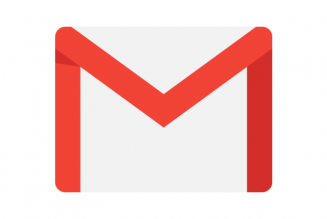Throughout the COVID-19 pandemic, people have been even more reliant on their Internet connections to stay in touch, educated, entertained, and productive.
Although the effects of the pandemic have been and continue to be devastating, we can only imagine what life would have looked like if this had happened in 1990, when the Internet was in its nascency.
From the ‘90s to now, connectivity and the global digital transformation have accelerated innovation and productivity, but those who still don’t have access to high-speed Internet risk being left out of this new digital world.
Unemployment, poverty, and inequality remain among South Africa’s biggest challenges, and narrowing the digital divide could help through job creation, skills development, and access to digital innovations.
Let’s look at 5 numbers that can help us better understand the state of connectivity in South Africa and its potential for growth:
1. 36%
This is the percentage of South Africans who remain unconnected to the Internet as of January 2021.
The vast majority of those who are connected also use mobile subscriptions to access the Internet. Considering that fibre is faster, more reliable, and has much lower data transmission costs than mobile connectivity, we will need to get more South Africans connected to high-quality, high-capacity Internet access to truly participate in today’s digital economy.
Accessing cloud software to help your small business, or streaming online video classes over a poor connection just isn’t possible. While the initial cost of investment for fibre infrastructure may be higher, it ultimately pays its dividends in speed, affordability, and what it enables.
2. R38.93
In South Africa, that’s the average cost per gigabyte from major mobile network providers.
This places South Africa 136th worldwide in terms of data affordability, making us 22 times more expensive than the cheapest data cost average in the world.
While South Africa’s data prices are gradually becoming more competitive, these high costs play a major role in blocking universal Internet access, and we need to find innovative ways to address these access issues.
Project Isizwe is a non-profit organisation that aims to empower low-income communities by offering uncapped Wi-Fi for R5 a day. Projects like these leverage the affordability of fibre, but they also rely on government subsidies and private sector involvement to remain sustainable.
With more projects like these, more low-income communities would have access to affordable data, growing South Africa’s digital population.
3. 1.2%
In 2019, Stats SA reported that only 1.2% of households in rural areas had access to the Internet at home, compared to 15.4% of households in metropolitan areas and 7.2% in urban areas.
With 32.4% of South Africans living in rural areas, this low percentage shows exactly how much needs to be done to provide all communities with Internet access at home.
Unfortunately, for many South Africans, if they want to access the skills and job potential that the Internet provides, they have to find somewhere else to use it, such as at work, cafés, or public hotspots.
4. 60.1
The GSMA Mobile Connectivity Index ranks countries’ connectivity according to their infrastructure, affordability, consumer readiness, and content and services.
Although the index categorises South Africa as a ‘transitioner’ country, our score of 60.1 out of 100 on the index makes us a mobile connectivity leader in Africa.
According to the report, the affordability of mobile devices remains a barrier to mobile connectivity.
5. 14.04 Mbps
This is the average national broadband speed in South Africa based on the annual Worldwide Broadband Speed League report, ranking us third in Sub-Saharan Africa, and 97th in the world.
The countries with the fastest broadband speeds continue to accelerate year-on-year, while most of the countries with the slowest connectivity are stagnating. According to the 2021 State of ICT Sector Report in South Africa, telecommunication investments have increased by 9.1% over a six-year period but decreased by 6% in 2020.
If South Africa wishes to remain a competitive economy in the global and African landscape, we will need to rekindle these investments. If we don’t, the world will continue to digitally transform while we are left behind.
By Steve Briggs, Chief Sales and Marketing Officer at SEACOM.
Edited by Luis Monzon
Follow Luis Monzon on Twitter
Follow IT News Africa on Twitter










